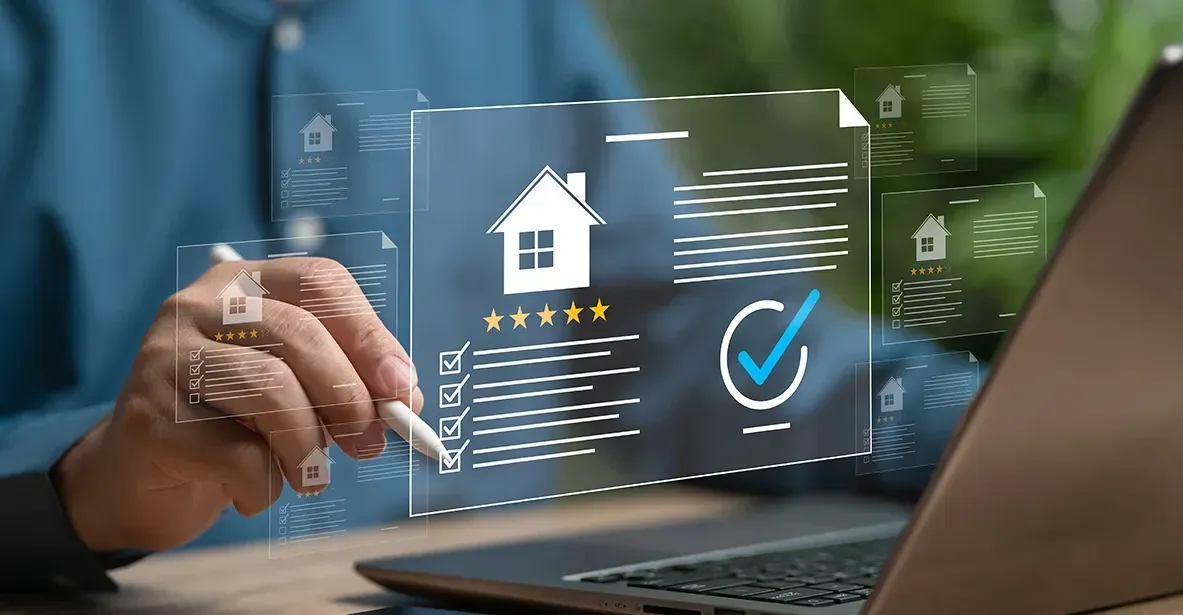The Future of Property Documentation: How Digital Land Records Are Changing the Game in India 2025

By
Shrusti Naik
Posted on August 11, 2025. 10 mins

The Future of Property Documentation: How Digital Land Records Are Changing the Game in India 2025
Introduction

In October 2024 the Press Information Bureau announced that 95 % of India’s 6.26 lakh villages now have computerised land records . At the same moment, 87 % of Sub-Registrar Offices have been integrated with the Digital India Land Records Modernisation Programme (DILRMP), and 68 % of cadastral maps have been digitised. For the Indian homeowner, investor, or first-time buyer, this is not a back-office upgrade; it is the front door to faster loans, fraud-proof titles and paperless registration.
1. From Paper Parcels to Pixel-Perfect Titles
Before 2016, most titles lived in yellowing ledgers in district record rooms. The Digital India Land Records Modernisation Programme (DILRMP) 2016–2026 replaced these with geo-referenced cadastral maps, Aadhaar-linked ownership and 14-digit ULPIN (Unique Land Parcel Identification Number). The result: a single URL now tells you owner name, survey number, encumbrance history and pending litigation, information that once took weeks and a bribe to extract. In Rajasthan’s Bhilwara district, a “Platinum Grading” under the Bhoomi Samman scheme cut title-verification time from 45 days to 48 hours. You might also like to checkout The Home Selling Checklist
2. Remote Registration: No More Emergency Flights
The Draft Registration Bill 2025 proposes 100 % online, paperless registration. NRIs in Dubai or Toronto can now digitally sign deeds, upload KYC and receive e-registrations without a Power of Attorney or an overnight flight to India. SBNRI estimates that ₹2–3 lakh in travel and legal fees can be saved per transaction. States like Maharashtra and Gujarat have already piloted e-registration queues; Mumbai’s Borivali sub-registrar issued 1,500 e-certificates in a single day in April 2025. Also read The Unseen Influence of Local Infrastructure Projects on Property Values: A 2025 Indian Playbook
3. Real-Time Due Diligence: From Guesswork to GIS Layers
Before signing, buyers can overlay satellite imagery on cadastral maps to confirm boundary overlap, encroachments and existing liens. Andhra Pradesh’s Naksha portal (launched February 2024) allows property tax, encumbrance and mutation status to be checked in under five minutes. Karnataka’s Bhoomi portal saw dispute filings drop 27 % after integrated land records were made public. You can also read our blog on hidden charges in home loans.
4. Faster Loans and Lower Risk
Banks now pull ULPIN-linked data directly from digital land records, cutting loan approval time by 35 %. HDFC’s 2025 pilot shows mortgage disbursements on digitally verified titles close in 11 days versus 31 days for paper titles. Fraud cases once rampant in Noida Extension and Greater Noida have fallen 42 % since Aadhaar-linked seeding began. For more sustainable innovations, check out Green Buildings.
5. Blockchain and AI: The Next Frontier
Pilot projects in Telangana use blockchain to immutably record mutations, while AI algorithms flag anomalous transactions within seconds. Interoperability APIs are being built to sync land records with e-Courts, ensuring court orders automatically update ownership, a feature 26 states have cleared for implementation. Also check out Fractional Ownership of Real Estate in India 2025
Conclusion

In 2025, digital land records have turned property ownership into a URL, clickable, verifiable and transferable. Investors who master the portal today will trade faster tomorrow, while those who ignore the shift risk holding a deed that no bank will touch. The future is not just digital; it is democratised.
Frequently Asked Questions
Q1. Is my existing paper deed still valid after digitisation?
Yes, but conversion to digital records is free; banks prefer the e-version for faster processing.
Q2. How do I check if my land is already digitised?
Enter ULPIN or survey number on dilrmp.gov.in; green tick means digitised and verified.
Q3. Can NRIs register property online in 2025?
Yes, Draft Registration Bill 2025 allows fully remote e-registration for Aadhaar-linked buyers .
Q4. Does digitisation reduce stamp duty?
No, stamp duty rates remain unchanged, but online payment portals save ₹3,000–₹5,000 in legal and travel costs.
Q5. What if the digital map and my boundary disagree?
File an online mutation request; GPS survey teams verify and update within 30–45 days in most states.